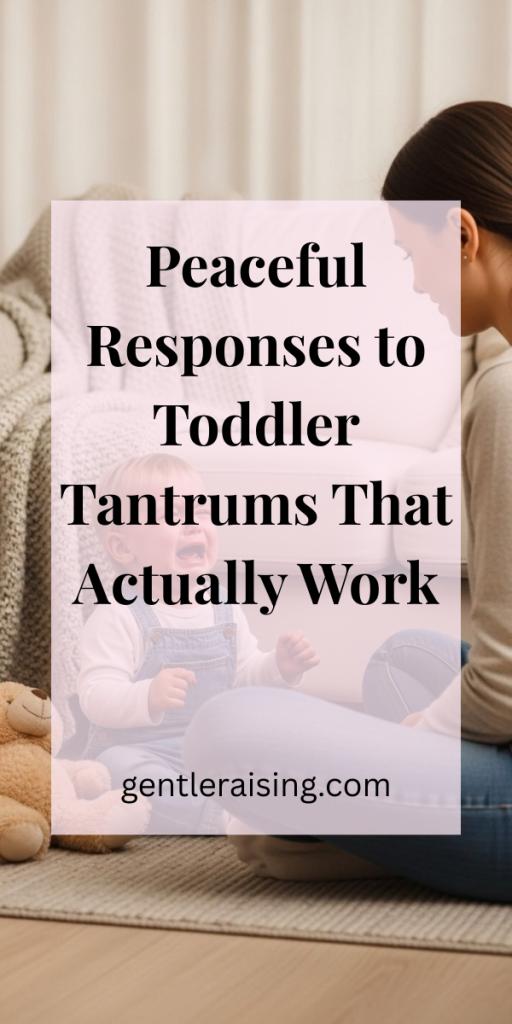Picture this: you’re standing in the checkout line, cart loaded, baby wipes on sale, and then it begins. Your toddler arches back like a gymnast, drops to the floor, and lets out a scream that could shatter glass. Every head turns. You can practically hear the silent judgment of strangers. Your heart races. Do you abandon the groceries? Do you give in? Do you melt into the floor and wish you had invisibility powers?
If this feels familiar, you’re not alone. Public tantrums are a universal parenting rite of passage, the grocery store meltdowns, the airport “stage performances,” the restaurant scream-fests. They’re stressful, messy, and sometimes downright mortifying. But here’s the thing: they’re also completely normal.
This article is for every parent who’s ever felt their cheeks burn as their child screamed in a public space. We’ll unpack why tantrums happen, why they’re so much harder in public, and most importantly, how to handle toddler tantrums in public without losing your cool or your sanity.
Why Tantrums Happen (and Why They’re Worse in Public)
Let’s get one thing straight: tantrums aren’t signs of bad parenting. They’re signs of normal toddler development. Toddlers are little humans with big emotions and an underdeveloped prefrontal cortex — the part of the brain that regulates self-control. Translation? They don’t yet have the tools to manage frustration, disappointment, or fatigue.
Now, throw in a crowded supermarket or a delayed flight, and things get amplified. Why?
- Overstimulation: Bright lights, noise, and endless “don’t touch that” moments can overwhelm little ones.
- Hunger or fatigue: The classic nap–meal collision is tantrum fuel.
- Unmet desires: They want the candy bar. You say no. Their brains short-circuit.
And for parents, the public setting adds an extra layer of stress. It’s not just the tantrum, it’s the audience. We feel judged, even when strangers aren’t actually judging. That pressure magnifies everything.
Funny enough, some cultures don’t see tantrums as embarrassing at all. In parts of Scandinavia, a child screaming in a café barely gets a glance. In others, like the U.S., parents often feel scrutinised. This cultural lens affects how we react, sometimes harsher than we would at home.
Mindset Matters: Staying Grounded Before the Storm
Here’s the truth: you can’t prevent every tantrum. But you can prepare yourself.
Tantrums in public often spiral because parents feel panicked or embarrassed. You may hear your inner voice say: “Everyone’s looking. I must be failing.” But what if you reframe that? Instead: “This is not about me. This is my child learning to manage big feelings.”
A few grounding strategies:
- Breath check: Slow, intentional breaths before responding. It calms your nervous system and models regulation.
- Mantra: Pick a calming phrase, “I’m the calm in their storm.” Repeat it mentally.
- Body language reset: Shoulders down, softer voice. Kids mirror our cues.
There’s a generational contrast here, too. Many of us were raised on “stop crying or else.” Our parents or grandparents often believed in quick correction through threats or spanking. Today’s gentle parenting approach emphasises connection over control. That shift takes practice, especially when you hear echoes of past parenting voices in your head.
In the Moment: Handling a Public Tantrum
Alright, so it’s happening. You’re in the middle of Target, and your toddler is in full meltdown mode. What now?
1. Stay Grounded
Easier said than done, but your calm presence is the anchor. Lower your voice, slow your movements. Think steady lighthouse in a storm.
2. Safety First
If your toddler’s thrashing near shelves, escalators, or streets, move them somewhere safe. Sometimes that means gently carrying them out, even while they kick.
3. Simple Words, Limited Choices
Don’t lecture mid-scream. Toddlers can’t process complex reasoning when dysregulated. Short, calm phrases work best:
- “You’re upset. We can sit or walk.”
- “I see you’re mad. Let’s take a breath.”
4. Tune Out the Audience
This one’s tough. People will stare. Some will frown. Others may smile knowingly (they’ve been there). Here’s the golden rule: you’re parenting for your child, not the crowd.
Example Scenarios
- In a grocery store: Step aside to a quieter aisle. Offer water or a small distraction. If it escalates, sometimes leaving the cart is the right call.
- On an aeroplane: Use headphones, favourite toys, or quiet sensory play. Apologise politely if needed; most parents on board will empathise.
- At a restaurant: Take a brief walk outside. Reset together, then try again.
Gentle Tools That Work in Public
Parents often ask: “Okay, but what can I actually do when my toddler melts down in public?” Let’s talk practical tools.
- Distraction power: Toddlers have short attention spans. A silly song, a peek-a-boo moment, or pulling out a sticker can redirect energy.
- Connection cues: Squat to eye level, soften your face, and say: “I hear you.” This can diffuse resistance faster than stern commands.
- Prevention: Before heading out, give a “preview”: “We’re going to the store. We’ll buy bread and apples, but no toys today.” Kids handle transitions better when they know what’s coming.
And yes, snacks. Some parents swear by a well-timed granola bar. Others worry about creating a “bribe cycle.” The balance? Snacks can be practical, not transactional. Think fuel, not reward.
What Not to Do (Even If It’s Tempting)
Let’s be honest: when your kid is screaming and strangers are watching, it’s tempting to go nuclear. But some reactions backfire.
- Yelling or threatening: It escalates tension instead of calming it.
- Over-apologising to strangers: It shifts focus away from your child’s needs.
- Giving in every time: If tantrums always “work,” kids learn the pattern.
Different cultures handle this differently. In Japan, parents often quietly guide children outside, letting the environment do the “discipline.” In the U.S., there’s more emphasis on immediate correction. Neither is wrong, but knowing alternatives helps parents feel less boxed in.
Teaching Moments After the Tantrum
Here’s the silver lining: every tantrum is a chance to teach. But timing matters. Never mid-meltdown — only once everyone’s calm.
- Name feelings: “You were frustrated when we left the park.”
- Show alternatives: “Next time, you can say, ‘I’m mad,’ instead of screaming.”
- Consistency: Toddlers learn through repetition. The more predictable your responses, the quicker they adjust.
Gentle parenting emphasises emotional literacy. The goal isn’t to “crush” tantrums, but to help kids recognise feelings and practice coping strategies.
Preparing for Next Time
Preparation makes public outings smoother. Think of it as your tantrum survival kit.
- Snack & water: Hunger is tantrum rocket fuel.
- Comfort item: A favourite toy, blanket, or book.
- Timing: Avoid outings right before naps.
- Mini practice at home: Role-play “we can’t buy candy today” scenarios in a safe space.
Some parents even keep a small “calm kit” in the car, crayons, fidget toys, and wipes. Because honestly, meltdowns don’t wait for convenient timing.
The Parents’ Emotions (Because You Matter Too)
We talk a lot about children’s emotions, but what about yours? Public tantrums can trigger embarrassment, frustration, and even guilt. And sometimes, they resurface your own childhood experiences. Maybe when your toddler screams, you hear echoes of how you were scolded.
Here’s the reminder: you’re not failing. You’re parenting a toddler, a human in training. Walking away from judgmental stares, or even laughing at the absurdity of it all, is a form of resilience.
Lean on your community. Text a fellow parent after a rough outing. Share the story. You’ll likely get a “been there” reply that lightens the load.
Closing Thoughts
Public tantrums feel like mini-disasters in the moment. But zoom out: they’re simply one chapter in toddlerhood. They don’t define you as a parent, and they don’t mean your child is “bad.”
Remember: your toddler isn’t giving you a hard ttimethey’re having a hard time. And in those moments, your calm, consistent presence teaches them more than any lecture ever could.
One day, the tantrums will fade. You’ll look back and laugh about the time your child lay flat on the Target floor because you wouldn’t buy neon slime. And you might even miss the drama just a little.
So next time you’re faced with a public meltdown, breathe. Ground yourself. Parent for your child, not the crowd. You’ve got this.

